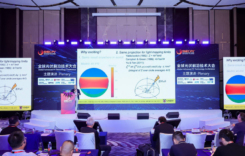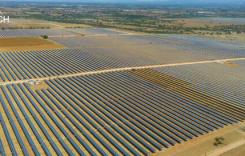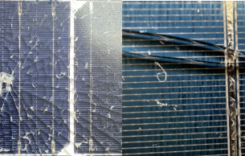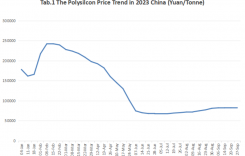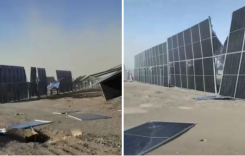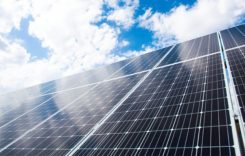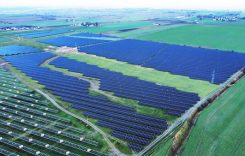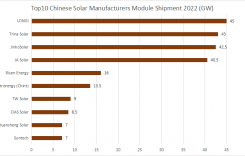PVTIME – As of the end of 2019, the cumulative installed capacity of grid-connected photovoltaics in China reached 204.68GW. From 2017-2019, China added 53GW, 45GW, and 30.2GW in capacity respectively, completing the installation goals outlined in the “13th Five-Year Plan” ahead of schedule.
At the same time, cost reductions and efficiency improvements along the photovoltaic industry chain also advanced at a similar pace. Prior to 2016, the conversion efficiency of PV modules was improving at a rate of approximately 0.3% per year, equating to about a 5W per year increase in mainstream 60 cell modules. Starting from the 2017’s yearend, it seems as if a new conversion efficiency record is announced by a company every couple of months.
With the “13th Five-Year Plan” concluding in 2020, Wang Jixue of China Renewable Energy Engineering Institute’s Renewable Energy Division expressed his outlook for the “14th Five-Year Plan” during the broadcast of the Fifth Century Photovoltaic Conference organized by CNE Media and PVTIME.
“Beginning from the midway mark of the “13th Five-Year Plan”, the technical aspects of China’s photovoltaic industry began improving greatly. This steady improvement is inseparable from the support of national policies which resulted in the promotion of market development as well as industrial upgrading.
Presently, China is at the forefront of the world’s large scale solar cell production. If China is to maintain this lead for the next 5 to 10 years, it needs to continue to push for technological breakthroughs, prepare to adapt to emerging technologies, and strengthen the protection of its supply chain’s intellectual property.
Additionally, aside from focusing on technical improvements on the manufacturing end, China also needs to place emphasis on the support capacity of PV power stations, and promote the adoption of solar energy as the primary energy source by enhancing solar generated electricity’s price competitiveness.”
Preferred 166mm wafers and the adoption of large size wafers down the road
In recent years, in order to obtain higher module power output and production cost reductions, companies have been incorporating 158.75mm, 161.7mm, 163mm, 166mm, and 210mm large size silicon wafers into their manufacturing operations. According to CPIA data, 156.75mm wafers will slowly fade out of the market in the next five years, and the proportion of 160-166mm wafers will gradually increase.
On the topic of large scale PV power stations’ future module section and developmental direction, Technical Director of Seraphim, Jin Peng said, “the increasing of wafer sizes is a relatively recognized developmental trend for the industry presently. Our analysis of 166mm wafers shows that its advantages offer it a very promising future in the market.”
It is understood that the industry is becoming more and more receptive of multi-busbar technology’s contribution on increasing module efficiency. 9BB increases the light receiving area of the cell and raises its overall efficiency by more than 40% thanks to the reduction of the shielding of light along the solder strips. At the same time, when combined with half cell technology, the cell’s power loss is reduced as well.
Jin Peng went on to say, “MBB + half cell is a combination widely used at this time. Additionally, when combined with large size wafers, the improvement in power is very significant. Currently, about 75% of the modules in the market are bifacial, and are able to generate anywhere from 10-30% in revenue under current production costs.
In the future, more and more power stations will be using bifacial modules, which will reduce land usage as well. Taking a 100MW PV system as an example, a considerable reduction of 1.2% in land usage can be achieved.”
According to IHS Markit’s 1500V Global PV Market Analysis Report, the combined scale of 1500V PV power stations will exceed 100GW in 2020 and high-voltage products have become the mainstream solution for the global PV market.
“Most of our module systems have switched to the 1500V system design. The high-voltage module system design is more flexible and reduces capital investment, installation, and maintenance costs of equipment such as cables, junction boxes, and inverters. According to Seraphim’s data, the combination of large size wafer and MBB will be the preferred module design for large scale power station application.” Jin Peng added.
Will 18Xmm be the optimal wafer size in the future?
Regarding the development trend of large size wafer, General Manager of Shuri Energy Zhang Zhiyu, shared his point view from the technical level, “as manufacturing costs become lower and lower, more savings will become achievable for power stations that select larger modules.
While larger modules become 20% bigger, the framing, bracket, packaging, and other costs only increases by 10%, but can brings about approximately 40% in savings to the power station. Additionally, due to the nature of the junction boxes, they are able to support the larger modules while manufacturing costs remain unchanged.”
Theoretical data shows that, the larger the module, the higher the power output, which leads to lower costs. Is this really the case?
“Transportation is one of the biggest restraints in the application of larger modules. Maintaining the optimal arrangement of components in shipping containers can control and reduce the costs associated with transportation.
According to calculations, in order to maximize the use of shipping containers, 1.2m is the optimal width for a module, and the maximum size of the wafer is then 18Xmm. I believe that in the future, PV power stations will usher in the 600W as the larger size modules become more mainstream.” Zhang Zhiyu added.
“Front Runner” and “Grid Parity Demonstrative Project” leaders: future cost reductions in PV power stations will come from the construction side.
The Baicheng Front Runner Project is a typical example of China’s current PV technology development progress. It adopts large size bifacial modules, 1500V systems, adjustable tracking brackets, and flexible DC to AC control, reducing investment costs while ensuring the stability of income.
Currently, the per watt construction cost of PV power stations is far greater than that of manufacturing it. The cost per watt in modules is about 1.5 yuan, while the cost of BOS for PV power stations has exceeded 1.5 yuan. In this regard, Zhang Zhiyu said, “in the future, the focus of cost reduction for PV power stations is not on module production, but on the construction end.”
Regarding the design optimization of future power stations, Meng Fanhui of POWERCHINA JiLin Electric Engineering Co., Ltd. said, “Choosing the optimal capacity ratio is crucial to a project’s profitability. Also, module tilt angle optimization can not only increase power generation, but also reduce investment costs associated with the supporting structure. The application of a 1500V high voltage system can also reduce DC side costs by about 2%.”
Currently, there are many subarray units of competitive parity projects exceeding 3MW in China. According to previous calculations, large square 3MW arrays can reduce investment costs by 1.5% compared to the original 1MW arrays.
“Different layouts of the same square array can bring about cost difference in aluminum alloy cable by more than 10%. Application of new materials such as galvanized aluminum will also reduce mounting bracket costs.” Meng Fanhui said.
Gu Binfeng, Project Manager of Shanghai Branch of TÜV SÜD Certification & Inspection China Co., Ltd., said, “from our experience with previous projects, the influence of electricity price policy is very important to PV power stations. Whether or not the power station is included in the national renewable energy subsidy catalogue, and the deadline requirement for its grid connection determines the subsidy price it enjoys.
The attenuation rate of photovoltaic modules directly affects the income of the power station. In addition, other factors such as the performance, seasons, temperature, and weather are also critical factors which can affect the power station’s operation.”



